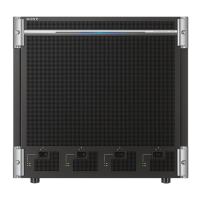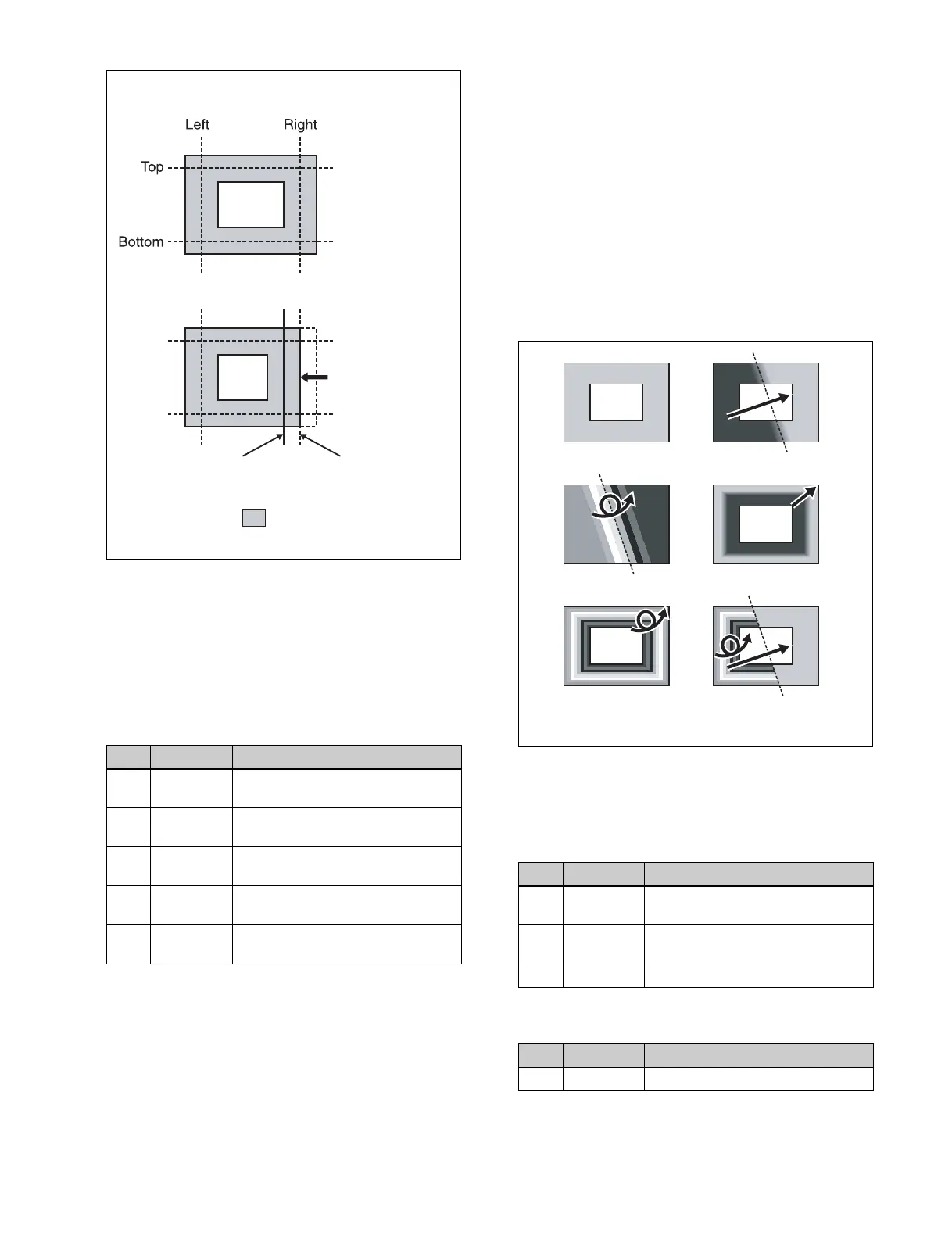212
Softening the inner and outer sides of art
edges
1
In the Art Edge menu (4114), press [Soft], turning it
on.
2
Set the following parameters.
Setting the way in which art edge colors
change
1
In the <Art Edge Source> group of the Art Edge menu
(4114), select the color pattern to apply to the art
edges.
Flat Color: Uses color 1 (see page 213) as a flat color.
Gradation Matte: If using boundary lines as borders
(see step 2), this transitions from color 1 to color
2) (see page 213).
Rainbow Matte: The color gradually changes hue
from color 1 to color 2 on the border lines.
Radial Gradation: Color 1 on the inner side is mixed
into color 2 on the outer side, according to the
shape of the art edge.
Radial Rainbow: The hue of color 1 on the inner side
transitions to color 2 on the outer side, according
to the shape of the art edge.
Rainbow Gradation: Color 3 (see page 213)
overwrites Radial Rainbow, giving a gradation
effect.
2
When other than [Flat Color] is selected, set the
gradation border lines for each pattern.
When [Gradation Matte] or [Rainbow Matte] is
selected
When [Radial Gradation] or [Radial Rainbow] is
selected
No. Parameter Adjustment
1 Inner H Simultaneously adjust softness of
left and right inner edges
2 Inner V Simultaneously adjust softness of
top and bottom inner edges
3 Outer H Simultaneously adjust softness of
left and right outer edges
4 Outer V Simultaneously adjust softness of
top and bottom outer edges
5 All Simultaneously adjust softness of
all inner and outer edges.
Example: Moving the right edge position in the “minus”
direction.
Art edge portion
Moving in the minus
direction
Position before
moving
Position after
moving
No. Parameter Adjustment
1 H Position of gradation border in
horizontal direction
2 V Position of gradation border in
vertical direction
3 Soft Softness of gradation border region
No. Parameter Adjustment
3 Soft Softness of gradation border region
Flat Color
Gradation Matte
Rainbow Matte
Radial Gradation
Radial Rainbow Rainbow Gradation

